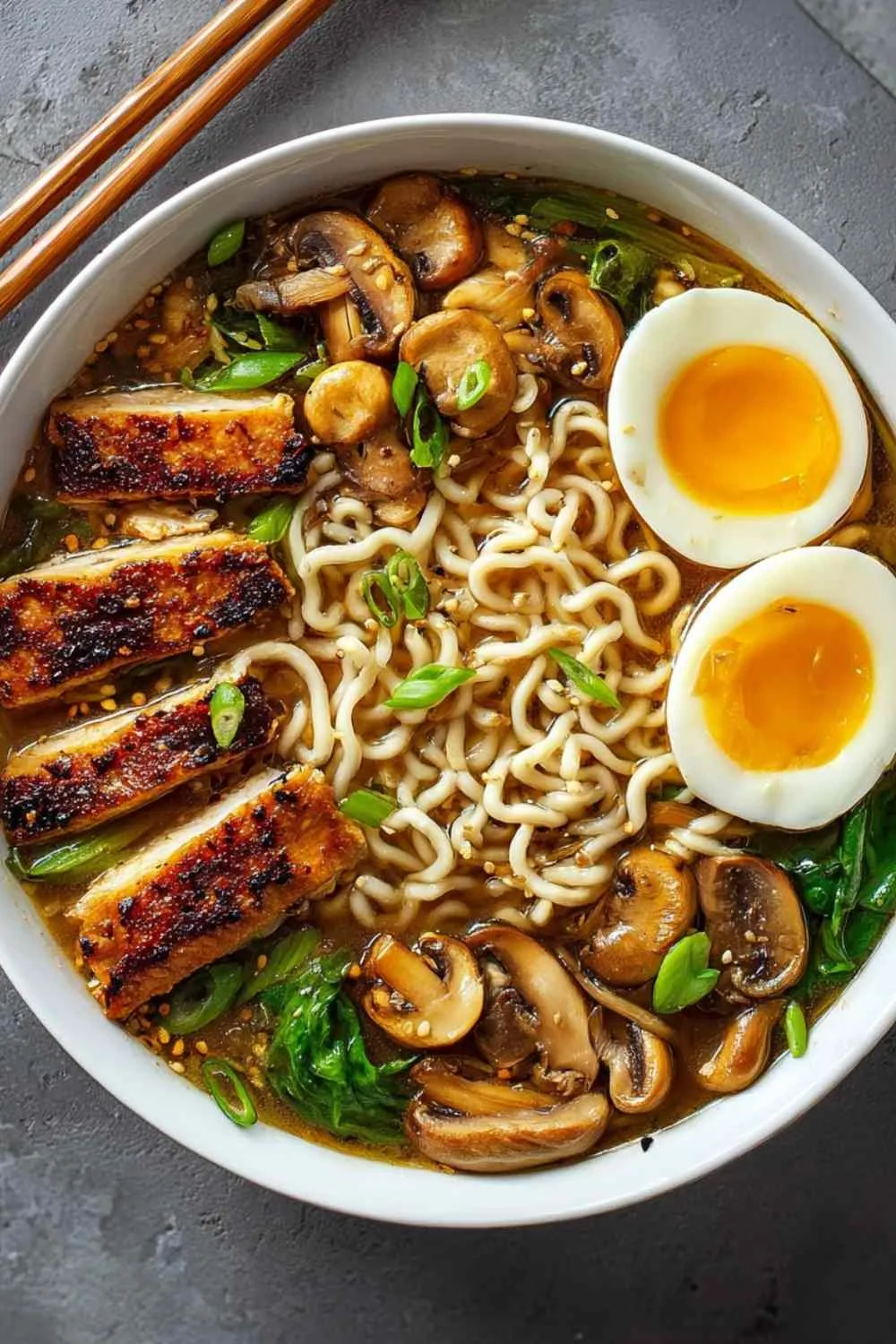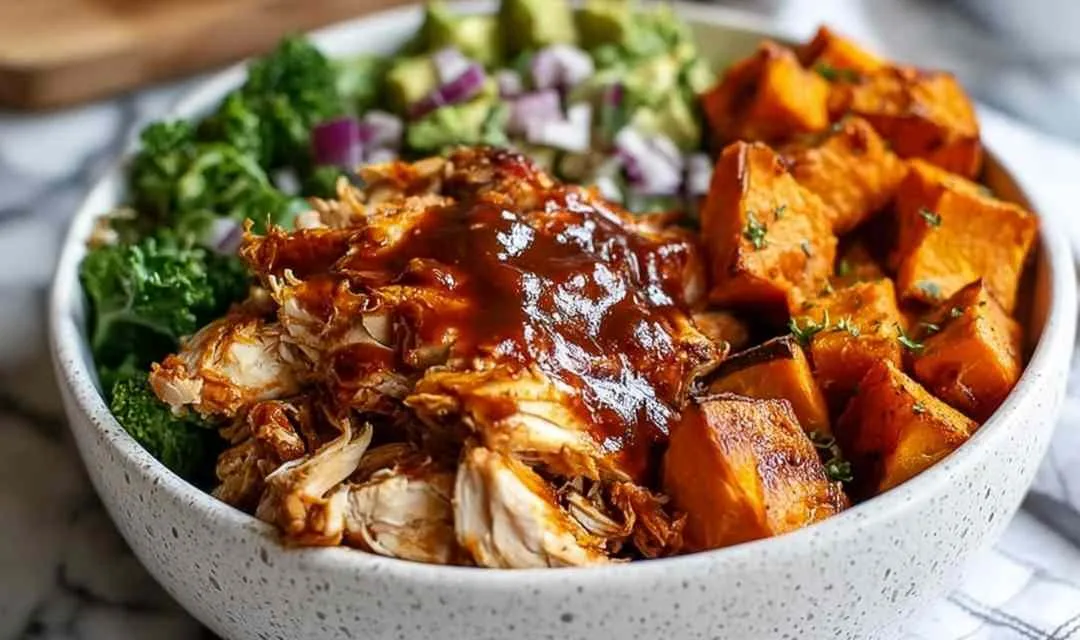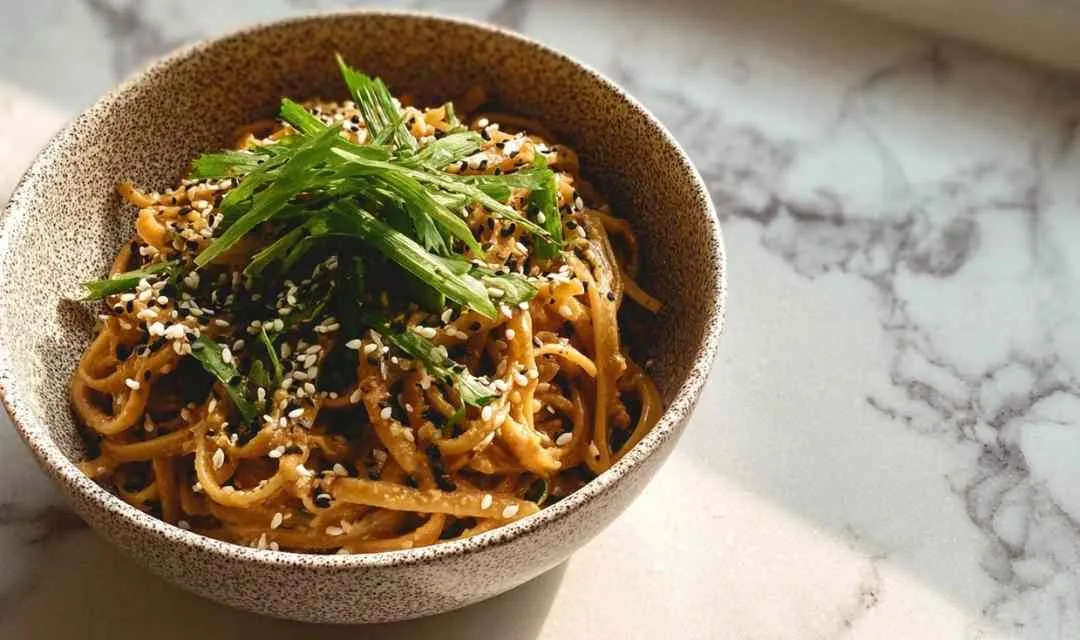Homemade ramen is one of those recipes that transforms a simple weeknight dinner into something truly special. I’ve been making this version for years, and it never fails to bring everyone to the table with its rich, savory broth and tender chicken. This isn’t your college dorm room ramen – this is the real deal, made from scratch with ingredients you probably already have in your kitchen.
There’s something magical about standing over a pot of simmering broth, watching the steam rise and catching that first whiff of garlic and sesame oil mingling together. It reminds me of those cold winter evenings at Grandma’s farm, when she’d ladle up bowls of soup that seemed to warm you from the inside out. This homemade ramen captures that same comfort, with juicy seared chicken, earthy mushrooms, and crisp bok choy swimming in a flavorful broth that’s been carefully built layer by layer. The soft-boiled egg on top? That’s the crowning touch that makes each bowl feel like a special treat. Time to get cooking!
What Makes This Homemade Ramen So Special
This recipe has become a family favorite because it delivers restaurant-quality flavor right to your home kitchen without any complicated techniques or hard-to-find ingredients. I’ve made this protein-packed ramen countless times, tweaking and perfecting it until it became something truly special.
- Protein-rich and satisfying with chicken breast and soft-boiled eggs that keep you full for hours
- Builds incredible depth of flavor by searing the chicken first, creating fond that becomes the foundation of your broth
- Uses white wine to deglaze the pot, amplifying every bit of flavor you’ve developed
- Packed with umami from mushrooms and soy sauce that creates that savory, can’t-stop-eating quality
- Flexible with vegetables so you can add whatever you have on hand or what’s in season
- Makes flavor packets obsolete because once you taste homemade broth, you’ll never go back

Ingredient Spotlight
Boneless, skinless chicken breast provides lean protein that stays juicy when seared properly, and I always pound it thin so it cooks evenly and develops a beautiful golden crust.
Baby bella mushrooms deliver earthy umami flavor to the broth, and I’ve learned that sautéing them separately keeps them from getting soggy.
Dry white wine deglazes all those flavorful brown bits from the pot, and Sauvignon Blanc is my go-to choice for its bright acidity.
Low sodium chicken broth forms the base of your soup, and using low sodium is crucial since the instant ramen noodles already contain salt.
Soy sauce adds that essential salty, savory depth, and I always use low sodium here too for better control over the final flavor.
Toasted sesame oil contributes a nutty, aromatic quality that makes this homemade ramen taste authentic.
Instant ramen noodles cook quickly and have the perfect chewy texture, and I use Maruchan or Top Ramen but skip their flavor packets entirely.
Bok choy adds a fresh, slightly sweet crunch that contrasts beautifully with the rich broth, though kale or spinach work well if that’s what you have.
Soft-boiled eggs with their jammy yolks create a creamy richness when stirred into the soup, and timing them for exactly 6 minutes is the secret to getting that perfect texture.
How to Make Homemade Ramen
Step 1. I’ve learned that starting with the mushrooms ensures they stay golden and flavorful. Heat 1 tablespoon each of olive oil and butter in a large soup pot over medium-high heat, sauté the sliced baby bellas for about 4 minutes until golden, then remove and set aside.
Step 2. Betty always prepares her chicken the same way: slice the breast in half lengthwise to create two thinner pieces, cover with plastic wrap, and use the textured side of a meat mallet to pound to ½ inch thick for even cooking.
Step 3. Pat the chicken completely dry with paper towels and season both sides generously with salt and pepper. This drying step is crucial for developing that golden crust.
Step 4. Heat the remaining tablespoon each of oil and butter in the same soup pot over medium-high heat, then sear the chicken for 4-5 minutes per side until deeply golden, working in batches if needed to avoid crowding the pot.
Step 5. After years of making this, I discovered that resting the chicken for a full 10 minutes before slicing keeps all those juices inside, so set it aside on a cutting board and turn off the heat while you build the broth.
Step 6. Betty’s tip: Add the white wine to the hot pot and set heat to medium. Use a silicone spatula to scrape up every bit of fond from the bottom and sides, letting it reduce by half over medium heat for 4-5 minutes.
Step 7. Stir in the butter and minced garlic, cooking for 2 minutes until fragrant but not browned, which builds another layer of flavor into your homemade ramen.
Step 8. Add the chicken broth, soy sauce, hot sauce, honey, sesame oil, and all the soup seasonings (onion powder, mustard powder, ginger, white pepper, and red pepper flakes), then bring to a gentle boil and let it reduce for 10 minutes to concentrate the flavors.
Step 9. While the broth reduces, I start my soft-boiled eggs. Submerge them in 2 inches of cool water, gradually bring to a gentle boil, set a timer for exactly 6 minutes, then immediately transfer to cool water with a slotted spoon.
Step 10. Slice your rested chicken into strips, bring the soup to a rapid boil, add the ramen noodles and cook for 1 minute, then reduce to a simmer and add the bok choy, mushrooms, and chicken for the final 3 minutes.
Step 11. Ladle the homemade ramen into bowls and top with sliced green onions, roughly chopped honey roasted peanuts, and those beautiful soft-boiled eggs cut in half.
Keeping This Ramen Fresh
I typically store leftover homemade ramen in an airtight container in the refrigerator for up to 3 days, and the flavors actually deepen overnight. The noodles will continue to absorb broth as they sit, so you might want to add a splash of chicken broth when reheating to loosen everything up. Betty’s storage method works well because she portions the ramen into individual containers, making it easy to grab a quick lunch.
This recipe freezes beautifully for up to 3 months, and I’ve had great success freezing it in family-sized portions. The chicken, vegetables, and broth hold up wonderfully, though the noodles will soften slightly after freezing. Through trial and error, I learned to slightly undercook the noodles if I know I’m freezing leftovers – they’ll finish cooking when reheated.
For the best texture, I reheat homemade ramen on the stovetop over medium heat until heated through, stirring occasionally. You can also microwave individual portions in 1-minute intervals, stirring between each, until steaming hot. If reheating from frozen, let it thaw in the refrigerator overnight for even heating, or add a few extra minutes to your stovetop reheating time.

Perfect Partners for Homemade Ramen
- Crispy Spring Rolls provide a delightful textural contrast to the warm, brothy noodles, and their crunchy exterior balances the soup’s richness perfectly
- Asian Cucumber Salad offers a cool, refreshing counterpoint with its tangy rice vinegar dressing that cuts through the savory umami flavors
- Steamed Edamame sprinkled with sea salt makes a simple, protein-rich starter that doesn’t compete with the ramen’s complex flavors
- Garlic Green Beans stir-fried until crisp-tender add a garlicky vegetable side that complements the sesame and soy notes in the broth
- Seaweed Salad adds a taste of the ocean and extra minerals with texture variety to your meal
- No Knead Bread is perfect for soaking up every last drop of that flavorful broth, and my family always requests it alongside this homemade ramen
- Simple Miso Soup makes a light starter before the main ramen bowl
- Japanese Mushroom Soup can be served alongside for mushroom lovers who want extra umami
FAQs
I recommend substituting an equal amount of chicken broth for the wine, though you’ll miss some of the bright acidity that helps balance the rich flavors.
Betty’s solution is to use kale or fresh spinach instead. Add heartier greens like kale with the noodles, or stir in delicate spinach at the very end.
Many home cooks find success preparing the broth and chicken up to 2 days ahead, then cooking fresh noodles and adding the vegetables when ready to serve.
To prevent this issue, start the eggs in cool water and bring them to a boil gradually rather than dropping them into already-boiling water.
The best approach I’ve tested is using pork tenderloin or firm tofu. Both work wonderfully when seared the same way as the chicken.

Homemade Ramen
Ingredients
Equipment
Method
- Heat 1 tablespoon olive oil and 1 tablespoon of butter in a large soup pot over medium-high heat. Add the mushrooms and sauté until golden, about 4 minutes. Remove and set aside.
- Slice the chicken breast in half lengthwise to create 2 thinner slices. Cover with plastic wrap and use the textured side of a meat mallet to pound it to 1/2 inch thick.
- Pat the chicken dry and season each side with salt and pepper.
- Heat remaining olive oil and butter in the same soup pot over medium-high heat. Sear the chicken in batches for 4-5 minutes per side, until a golden crust has developed. Set aside and turn the heat off. Let the chicken rest for 10 minutes, then cut into strips of desired size.
- Add the wine and set the heat to medium. Use a silicone spatula to scrape the bottom and sides of the pot, lifting all the flavorful brown bits. Let the wine bubble gently and reduce by half, 4-5 minutes.
- Add 1 tablespoon butter and minced garlic and cook for 2 minutes.
- Add the chicken broth, soy sauce, hot sauce, honey, sesame oil, onion powder, mustard powder, ground ginger, white pepper, and red pepper flakes. Bring to a gentle boil and let the broth reduce and concentrate for 10 minutes.
- While the broth reduces, prepare soft boiled eggs: Submerge eggs in 2 inches of cool water. Gradually bring to gentle boil. Set timer for 6 minutes. Remove immediately with slotted spoon. Rinse under cool water to stop cooking, then peel and slice in half lengthwise.
- Bring the soup to a more rapid boil, add the Ramen noodles, and cook for 1 minute. Reduce to a gentle simmer and add the Bok Choy along with the cooked mushrooms and chicken. Simmer until the noodles are done, about 3 minutes.
- Transfer to serving bowls and top with green onions, roughly chopped honey roasted peanuts, and a soft-boiled egg.









